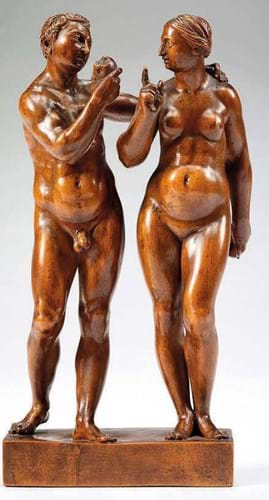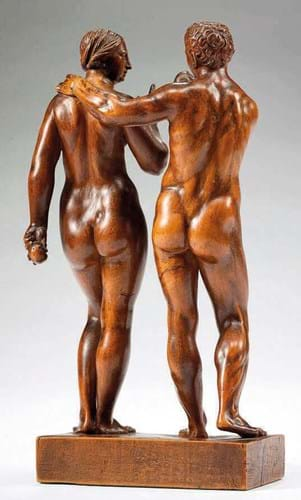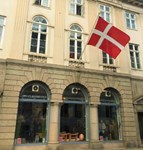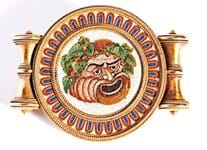It came for sale at Sotheby’s on July 5 by descent from Leopold von Lieben (1835-1915), a prominent member of an aristocratic Jewish family based in fin de siècle Vienna and one-time president of the Austrian stock exchange.
According to family tradition, the sculpture was brought to The Hague shortly before the outbreak of the Second World War by his granddaughter Louise Leembruggen (1898-1984).
Born in Baden-Württemberg into a family of stone sculptors, Kern made his name carving ‘kunstkammer’ statuettes in ivory or hardwood. He was among the first German sculptors to model nudes from life.
This 11½in (29cm) group carved from a single block of fruitwood – probably pear, one of Kern’s favoured materials – can be dated to the peak of his career c.1640-50 when statuettes from his workshop in Schwäbisch Hall were delivered to the courts of Berlin, Brunswick, Dresden, Baden-Baden, Munich and Florence. Representations of Adam and Eve were a favourite subject.
The Bode-Museum, Berlin, owns both an ivory group bearing the LK monogram dated to c.1646 and a pair of ivory statuettes that – as here – show the figures in mirrored contrapposto after Albrecht Durer’s influential engraving of 1504.
Another fruitwood figure of Adam, part of the Stanley J Seeger collection, was sold at Sotheby’s in October 2018 for a multi-estimate £310,000.
The rediscovered double-figure group, which has been hastily added to the oeuvre of Kern, was offered as part of a lively 19-lot sale of Master Sculpture from Four Millennia.
Estimated at £200,000-300,000, it posted the highest price of the day at £730,000 (£918,300 including 26/21% buyer’s premium).
















